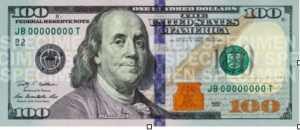Lowering Prices Can Make You a Lot More Money
- At May 26, 2016
- By rbadmin
- In Blog
 0
0
 It’s a hard thing for some businesses to comprehend, but lower prices can bring in a lot more money. Just look at Walmart. Whether you love the company or hate it, there’s no denying that its “always low prices” strategy works. It’s the largest company by revenue in the world.
It’s a hard thing for some businesses to comprehend, but lower prices can bring in a lot more money. Just look at Walmart. Whether you love the company or hate it, there’s no denying that its “always low prices” strategy works. It’s the largest company by revenue in the world.
You have to be careful, though. The lower the price, the lower the perceived value. You wouldn’t buy a smartphone for 99 cents. The thing wouldn’t even work. It would have to be some kind of a scam. Perhaps it’s a dead phone that somebody dropped in the shower and is being sold used as a repurposed paperweight.
The higher the price, the higher the perceived value. What would you think of a smartphone that cost 5,000 dollars? That phone must really be something. The new iPhone probably looks like a 1980s Atari console by comparison. Leonardo DiCaprio probably has one. But we don’t have Leonardo DiCaprio’s budget, so we’re not dropping five grand on a phone, not even if the battery lasts all year on a single charge.
It may be hard to admit this, but you’re generally better off erring by pricing a little too low than a little too high. You’ll move a lot more units while doing little or no damage to the perceived value.
The Marketing MO blog precisely sums up how an elastic demand curve works.
When you raise prices slightly, volume goes down substantially.
When you lower prices slightly, volume goes up substantially.
Of course, you’ll want to make sure a lower price doesn’t obliterate your profit margin. You want to find the sweet spot that yields the most revenue. If you sell more units at a lower price but hardly make any money because the profit margin is miniscule, it’s not worth it. Likewise, if you’re only selling a small number of units because your price is too high, it doesn’t matter if you can drive a tank fleet through your profit margin—you’re not making much money.
Generally, you’ll have to price your products within the normal range of the market unless your product is stratospherically better than the competition’s, but even then you have to be careful. Your would-be customers will compare your prices to everyone else’s if it’s remotely feasible for them to do so. If they’re making a purchasing decision while standing in the aisle at Best Buy or browsing online at Amazon.com, price shopping is no more difficult than moving their eyeballs.
Sean D’Souza at Copyblogger makes a good point. “You want to create a situation where clients have stopped considering the competition and are now choosing from your range of products, services, or courses.”
You can do this easily if you sell directly from your own website. Potential customers will have to take at least a few extra steps before they can price shop. Instead of comparing your product’s prices to those of your competition, they’ll be comparing prices of your products. If you’re selling six different smartphones, or six different whatevers, they’ll ask themselves which of your six products looks like the best deal.
And that’s where the fun begins. You’ll have all kinds of leverage that you can’t have when selling at Best Buy or on Amazon. You might not need to lower your prices at all. By raising the price of one or two products, you’ll make the less expensive ones look like even better deals by comparison. You can’t do that at Best Buy because you can’t control your competition’s prices.
If your demand curve is elastic, however, you still might be better off lowering prices. It can produce shocking results.
When developer Gunnar Bartels dropped the price of his Sharemouse app from 25 dollars to 10 dollars, his sales and profits went through the roof. Techdirt has the details in a case study, but here’s the money quote:
“Holy cow!” Bartels wrote. Translation: He sold more licenses than the elastic pricing model predicted.
He was understandably skeptical and thought the experiment would almost certainly fail, but he gritted his teeth and dropped his price anyway because you never know until you try.
Be brave. Experiment. Keep trying until you find your own sweet spot.
Artificial Intelligence Can Transform Marketing
- At May 10, 2016
- By rbadmin
- In Blog
 0
0

Over at the Huffington Post, Emma Rush, CEO of the British marketing agency Chemistry, makes a solid case that the marketing industry can learn a lot from Netflix. “Its algorithms,” she writes, “are used to gauge the success of shows, target relevant creative, package programming for specific people, and even to acquire new programming.”
Netflix knows what you want to watch because it knows what you have already watched. The more movies and shows you watch on Netflix, the more the company “knows” you and the more data its algorithms can churn. If you tend to gravitate toward award-winning romantic comedies, Netflix will suggest, or push, award-winning romantic comedies you haven’t watched yet.
If you want to see an even better model, look at Amazon. It started out as a bookstore, but it now sells just about everything except real estate and cars. You can get the electronic edition of the latest Lee Child thriller, but you can also order bath towels, steak seasoning, a high-tech non-stick frying pan, incense from India, and nutritional supplements. You can also stream Amazon Studios’ original content, such as the terrific police procedural, Bosch, based on Michael Connelly’s novels about LAPD homicide detective, Hieronymus (Harry) Bosch, named after the famous Dutch painter.
Because you can buy, read and watch just about anything from Amazon, the website’s algorithms can collect even more data points about you than Netflix can. Some people find this creepy, to be sure, and don’t want to be tracked by faceless corporations on the Internet, but the truth is that most people like it when retailers know what they want in advance and therefore know how to market to them.
One of the big reasons why Barnes and Noble struggles so much to compete online with Amazon is because when you go to BarnesandNoble.com, the company doesn’t care all that much about what you want to read. It pushes the latest best-sellers instead. Shopping for books at Amazon is the online equivalent of stepping into a brick and mortar bookstore where the owner has known you personally for years and can confidently say, “hey, we’ve got this new book by a fantastic new unknown author, and I know you’re going to love it.”
Compare that to how most websites work. “Three quarters of people are frustrated with websites when ad content has nothing to do with their own interests,” Rush writes, “and as more of our online activity moves to mobile, advertising eating into users’ mobile data plans is likely to become an even more emotive issue.”
Amazon and Netflix are able to provide a deeply personalized experience because their artificially intelligent algorithms have massive amounts of personal data to work with. Few companies—and no marketing agencies—have that kind of data at their disposal right now. And no company or organization will ever know everything about an individual’s tastes and preferences. Privacy concerns aren’t going away. Corporate and government omniscience is naturally resisted by huge numbers of people and probably always will be.
It’s nevertheless likely that the massive amounts of time marketing strategists currently spend pouring over mind-boggling amounts of data will eventually be outsourced to intelligent algorithms like those used at Netflix and Amazon. Advertisers may never have as much data to work with, and human intelligence backed up by years of professional experience and judgment can probably never be replaced by a marketing robot, but artificial intelligence is still in its infancy. We’re at the very beginning of a trend here, not the end.
“Netflix data didn’t create Breaking Bad,” Rush concludes, “and there was no data that could have predicted such a storyline would work. That was down to the show’s creator Vince Gilligan and his desire to rewrite the traditional ‘rules’ of a TV series. What Netflix is very good at, and what brands can learn from, is how to set up systems overlaid with human creativity. Systems that identify, in real-time, the various ways people engage with programmes, allowing brands to make faster and more confident decisions about what to show, to whom, and when.”
